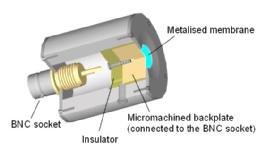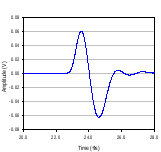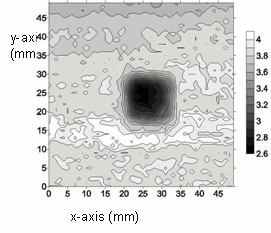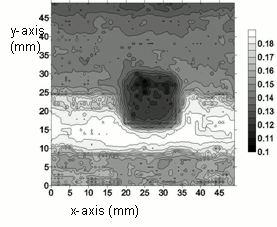Air-coupled ultrasonic NDE
This uses our designs of polymer-filmed electrostatic ultrasonic transducers, together with pulse compression signal processing, to get round the large acoustic impedance mismatch between air and solid samples for imaging purposes. A schematic diagram of a planar transducer for operating in air with a bandwidth of 1MHz is shown in Figure 1(a), with typical outputs in air being shown in Figure 1(b).
|
|
|
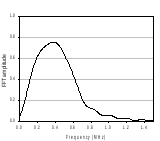 |
| (a) | (b) |
Figure 1: Air-coupled transducer design and output characteristics
For air-coupled NDE, the transducers are usually scanned in pairs across samples in through-transmission, as shown schematically in Figure 2. The result is capture of the pulse compression output as a function of position, from which air-coupled, non-contact images can be created.
|
|
|
|
| (a) | (b) |
Figure 2: (a) Apparatus for air-coupled ultrasonic NDE; (b)Images of 10mm square defect in a CFRP composite plate for amplitude (left) and travel time (right).

